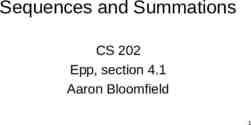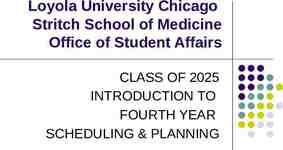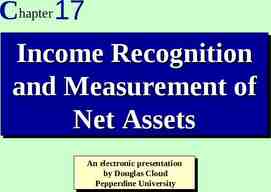National Communications System (NCS) & Priority Service Programs
35 Slides7.58 MB

National Communications System (NCS) & Priority Service Programs Overview Dr. Peter Fonash Acting Director, National Communications System Department of Homeland Security (703) 607-6200 [email protected]

Agenda NCS Overview Priority Service Program Overview 2

The The National National Communications Communications System System “Helping “Helping to the Security Security of of the the Nation” Nation” to Ensure Ensure the 1961-1981 1981-1993 EO 12382 NSTAC Established (1982) 1993- Present EO 12472 NCS Expanded (1984) EO 12656 Further NS/EP Definition (1988) Cuban Missile Crisis (1962) PDD-63 CIP (1998) FRP Comm Annex (1992) National Plans For CIP (2000/2001) EOs 13231 & 13228 CIP in Info Age & Homeland Security (2001) NCS (1963) Cold War National Security & Emergency Preparedness (NS/EP) Divestiture (1984) NCC (1984) Critical Infrastructure Protection PCCIP (1996) Homeland Security Act Telecom ISAC (2000) (2002) 3

Assist the President, NSC, HSC, OSTP and OMB In the exercise of the telecommunications functions and responsibilities in wartime and non-wartime emergencies In the coordination of the planning for and provision of national security and emergency preparedness (NS/EP) communications for the Federal Government under all circumstances, including crisis or emergency, attack, recovery and reconstitution. We Weassure assurethe thecommercial commercialtelecommunications telecommunicationsinfrastructure infrastructure isisavailable available(at (atall alltimes) times)for forNS/EP NS/EPcommunications communicationsand and coordinate coordinatethe therestoration restorationof ofthe thecommercial commercialinfrastructure infrastructure 4

Information Analysis and Infrastructure Protection Under Secretary Frank Libutti Chief of Staff John Chase Director Homeland Security Operations Center Matthew Broderick Assistant Secretary of Homeland Security for Information Analysis (ASIA) Patrick Hughes IA-H (Headquarters) IA-C (Current) Ken Campbell IA-S (Strategic) Karen Morr IA-R (Requirements) Bernie Farrell IA-L (Logistics) Tom Faust Assistant Secretary of Homeland Security for Infrastructure Protection (ASIP) Robert Liscouski Policy & Planning Business Office Infrastructure Coordination Division James Caverly Strategic Partnerships Sallie McDonald National Cyber Security Division Amit Yoran National Communications System Brenton Greene Protective Security Division James McDonnell 5

NCS Organization President OSTP Committee of Principals* Government Arm Council of Representatives NSC HSC OMB NCS Executive Agent Secretary of Homeland Security Manager, NCS Assistant Secretary for IP Deputy Manager National Security Telecommunications Advisory Committee (NSTAC) Industry Arm Industry Executive Subcommittee Mr. Brenton Greene *Committee of Principals was also called the “Committee for National Security and Emergency Preparedness Communications” during 2002 Office of the Manager OMNCS Staff Task Forces & Working Groups Legend Direction Coordination Advisement 6

NCS Partnerships Interagency Industry NCS National National Communications Communications System System (NCS) Executive Executive Office Office of of the the President President Executive Executive Agent Agent -Secretary Secretary of of Homeland Homeland Security Security 23 23 Departments/Agencies Departments/Agencies DHS TREAS DOC DOS NRC HHS GSA DOD DOT DOJ DOE NASA USPS FRB VA National Security Telecommunications Advisory Committee Advises the President 30 Senior Executives LOCKHEED MARTIN (Chair) DOI CIA JS FEMA NSA USDA FCC NTIA BELLSOUTH (Vice Chair) AT&T BANK OF AMERICA BOEING AMD CSC EDS LUCENT MICROSOFT NORTEL NORTHROP GRUMMAN RAYTHEON ROCKWELL QWEST SAIC SBC SPRINT TELEDESIC UNISYS USTA VERISIGN VERIZON WESTERN WIRELESS MCI CTIA MOTOROLA Members as of 1/28/047

NCS Priority Service Programs User Community Telecommunications Service Priority (TSP) Government Emergency Telecommunications Service (GETS) Wireless Priority Service (WPS) Internet Protocol Priority Service (IPPS) 8

Non-Federal users require Federal Agency sponsorship

Telecommunications Service Priority (TSP) Program FCC & NCS Program that registers vital circuits for priority repair or installation 40,000 circuits registered before 9/11 15,000 new circuits registered since 9/11 101 new agencies registering since 9/11 Major factor in Wall Street recovery on 9/17 Used by major carriers for prioritization 10

Telecommunications Service Priority (TSP) Program The TSP program contains two primary and distinctive components: Restoratio Restoratio n n A restoration priority A restoration priority is appliedto tonew newor or is applied existing telecommunicatio existing telecommunication services ervicesto to sn ensure restorationbefore beforeaa ensure restoration nonTSPprogram System nonTSP user. user. Must be requested and assigned before a service outage occurs Provisionin Provisionin g g A provisioning priority A provisioning priority is obtainedto tofacilitate facilitate is obtained the priorityinstallation installation the priority of new telecommunicatio of new telecommunication services ervicesin inaashorter shorter sn than normal than normal . interval interval Cannot be used to compensate for inadequate planning 11

The Fundamental Issue: Network Congestion Congestion, at many points, can block a call ! Local Exchange Networks AT&T MCI SPRINT Local Exchange Networks Mobile Switch Mobile Switch Government Emergency Telecommunications Service addresses wireline congestion Wireless Priority Service addresses wireless congestion at call origination and call termination 12

The GETS Calling Card Government Emergency Telecommunications Service 123 456 789 012 Name: MARTIN FISHER Calling cards are in widespread use and easily understood by the NS/EP User, simplifying GETS usage GETS priority is invoked “call-by-call” Organization: MITRETEK SYSTEMS TO MAKE GETS CALLS 1 TOUCH-TONE PHONES GETS authority is vested in the individual, not the phone number, through use of a calling card approach CANNOT COMPLETE For AT&T: 1 888-288-4387 For MCI : 1 800-900-4387 For Sprint: 1 800-257-8373 FTS OR DISN USERS Dial 1 710-NCS-GETS (627-4387) After the tone enter your PIN. When prompted, dial your destination number (Area Code Telephone Number). Try a different long-distance carrier by dialing: For AT&T: 1010 288 For MCI: 1010 222 1 710-627-4387 For Sprint: 1010 333 } Use normal procedures to get a FTS or DISN dial tone, then dial 710-627-4387 Dial 1 800-818-GETS (4387) to get help or report trouble at any time. You can also obtain user assistance through GETS. NEED ASSISTANCE? When prompted for your destination number dial 703-818-GETS. U.S. GOVERNMENT PROPERTY. If found, return to OMNCS (N2), 701 South Courthouse Road, Arlington, VA 22204-2198. WARNING: For official use only by authorized personnel. 13

GETS Priority Features and Enhanced Routing Government Emergency Telecommunications Service 12 3 456 7 89 01 2 Name: Organization: 1. TONE -- Enter PIN 2. PROMPT – Enter destination number Enhanced Routing and Priority Treatment in IXCs IXC AT&T IXC AT&T IXC MCI IXC MCI Call in AT Queue IXC Sprint Call in IXC Queue IXC Sprint AT AT Call in AT Queue Alternate Carrier Routing EO User Dials 1-710-NCS-GETS Call in EO Queue Plus!.GETS has Exemption from control restrictions Priority in the signaling network EO Call in EO Queue 14

percentages may not add to 100 due to round-off GETS Card Distribution as of 26 Apr 2004 (1,680 Orgs / 83,177 PINS) Other Federal Gov. NCS 2% (48 Orgs / 5,631 PINS Other Fed. Gov. NCS 7% of total) (1 Orgs / 2,015 PINS 2% of total) VA (1 Orgs / 1,860 PINS 2% of total) Federal Gov. Non-DHS/NCS (34 Orgs / 4,315 PINS 5% of total) Other NS/EP (SA & ARC) (6 Orgs / 1,312 PINS 2% of total) State Gov. (141 Orgs / 8,186 PINS 10% of total) USPS (2 Orgs / 2,938 PINS 4% of total) TREAS (11 Orgs / 2,404 PINS 3% of total) Local Gov. (540 Orgs / 9,515 PINS 11% of total) GSA (12 Orgs / 1,436 PINS 2% of total) Industry (514 Orgs / 8,455 PINS 10% of total) FRS (15 Orgs / 1,523 PINS 2% of total) DHS (44 Orgs / 11,112 PINS 13% of total) DOT (23 Orgs / 4,040 PINS 5% of total) DOJ (1 Orgs / 1,377 PINS 2% of total) DOI (10 Orgs / 1,277 PINS 2% of total) DOD-NGB (53 Orgs / 4,628 PINS 6% of total) DOD (224 Orgs / 11,153 PINS 13% of total) 15

GETS Homepage http://gets.ncs.gov Access the NCS GETS Homepage for information on GETS Use easy to follow process to sign up for GETS Download GETS documentation and training tools 16

Attack on America September 11, 2001 During peak, wireless traffic increased by 50 to 100 percent nationwide One wireless carrier’s traffic ballooned by 400 percent in Washington and 1,000 percent in a NY area switching center Urgent requirement for wireless priority access Wireless congestion reported everywhere, not just in WTC and Pentagon areas 17

Wireless Priority Service A Single Program: Two Phases National Security Council October 2001 National Security Council Memorandum, October 9, 2001, SUBJECT: Minutes from October 5, 2001 Meeting on Select NS/EP Telecommunications Projects Immediate Action “NCS will move forward on implementing an immediate solution (target: within 60 days) using channel reservation capability from one vendor for the Washington, DC area; based on lessons learned in DC, NCS will make a recommendation on whether to expand the immediate solution to other metro areas.” Longer-Term “In parallel, the NCS will proceed with deploying a priority access queuing system for wireless nationwide (target: within one year).” 18

What is WPS? An enhancement to basic wireless service that allows your National Security/Emergency Preparedness (NS/EP) calls to queue for priority service in order to complete the call Together with GETS, WPS dramatically improves “end-to-end” call completion during emergencies Designed for 95% call completion at FOC 19

Achieving “High Probability” Cellular Communications Software enhancements for queuing/priority treatment at: Radio interface between Base station (cell site) and handset Mobile Switching Centers Signaling network Joint government and industry specification development, software development, interoperability testing, and standardized network implementations GSM “Industry Requirement” --- to GSMNA/GSM Int’l CDMA “Industry Requirement” ---- to TIA (TR-45) 20

Wireless Industry Cooperation for WPS GSM Track—Cooperative Agreed-Upon Specification plus Using Standards-Based eMLPP. Development continues, products being delivered, implementation underway CDMA Track—Cooperative Agreed-Upon Specification Already Built, on way to Standards Body. Development pending 21

Wireless Priority Services Congestion Points . . . . . Local Q Networks Channels Q . . . . . . . Q . . . . . . Q . . . . Q Mobile Switch Channels Q Q Local Networks Q Q Q NS/EP Call Queuing Q Q Mobile Switch Channels . . . . . . NS/EP Channel Queuing Q Long Distance Carriers . . . . . . . . . . Congestion Points (with WPS “fixes”) . . NS/EP Channel Queuing . . Q Initial capability radio channel queuing [began in May 2002] Full capability egress radio queuing, interswitch trunk queuing, priority switch handling features [deployment began January 2004] 22

Initial Operating Capability ALL YOU DO: When you need to make an NS/EP call and you encounter congestion, retry your number prefixed with *272. (Including 710NCS-GETS) Wireline Networks Government Emergency Telecommunications Service GETS Q Mobile Switch No Priority Features Mobile Switch Q *272 Dial * 272 Destin destination no. ation# send The Rest is Automatic: Your call will queue for the next available traffic channel 23

Full Operating Capability Dial * 272 dest. # SEND GETS *272 Dest # Q Wireline Networks Congestion: No radio channel Call gets to congested switch Government Emergency Telecommunications Service GETS Q Q Mobile Switch Q End-to-End Priority Treatment Q GETS Q If dest is long distance Or Mobile Switch Q Q Q Q If dest is mobile in another MSC INCOM GETS -ING CALL INCOM GETS -ING CALL If dest is local mobile 24

Probability of Call Completion Expected WPS Performance and Public Impact 100% 90% 80% 70% 60% 50% 40% 30% 20% 10% 0% Current Baseline NS/EP After WPS Implementation Public Impact With WPS 1 2 3 4 5 6 7 8 9 Increasing Load Level (x Engineered Load) 25

WPS Performance Composite IOC and FOC Likelihood Call Completion To/From LEC and IXC 1.00 Commerc ial networks designed for these overload s .90 FOC .80 .70 IOC .60 .50 Overloads experienced in recent large scale emergencies: SF earthquake, LA/Northridge earthquake, 9/11 Public .40 .30 .20 .10 .00 50 Channels NS/EP at 10% Normal Load Results from event simulation to/from MSC to LEC and IXC Congestion Scenarios weighted 80/20 Localized vs Wide Area 1 2 3 4 5 6 7 8 9 10 IOC .985 .831 .734 .685 .654 .628 .611 .601 .584 .575 FOC 1.000 .997 .994 .988 .988 .986 .982 .982 .982 .980 Public .971 .640 .454 .353 .288 .242 .210 .187 .166 .151 Overload (X Times Engineered Load) 26

Carrier Status now T-Mobile FOC in DC/NYC and most east coast markets completed Mar 04 Next 1/3 begins Apr 04 Last 1/3 begins Jul 04 Cingular Contract signed Mar 04 First market available Apr 04, California Nextel Contract awaiting signature IOC begin within next 90 days FOC begin in third quarter AT&T Wireless Contract in final negotiations Begin IOC in first market within next 90 days Working with Verizon and Sprint 27

T-Mobile Coverage and WPS Availability AVAILABLE NOW Projected 2nd Q CY04 Projected 3rd Q CY04 19 Feb 2004 Roaming -- No WPS Service 28

Eligibility and Priority Assignment Who Is Eligible? Persons in NS/EP leadership positions Applicable at all levels: Federal, State, Regional, Municipal User Classification Examples Category #1: Executive Leadership/Policy Makers President, Governors, Lt Governors, City/County leaders, Cabinet officers, key senior staff Category #2: Disaster Response / Military Command & Control Continuity of government and national security leadership; EOC coordinators/directors Category #3: Public Health, Safety, Law Enforcement Senior command levels of law enforcement, fire and public safety functions Category #4: Public Services/Utilities and Public Welfare COE leadership; water/Sewage/ telecomm/transportation leadership Category #5: Disaster Recovery Medical resources; sheltering; infrastructure damage assessment; DFO 29

WPS Program Direction Calendar Years 2002 2003 2004 2005 2006 2007 WPS "Immediate" IOC GSM Development GSM Carrier Implementation CDMA Development CDMA Carrier Implementation FOC IOC IOC IR FOC IR FOC HLR IR Phase 1 Phase 2 FOC Development Carrier Meetings IOS FOC Phase 1 – high assurance of priority at call origination Phase 2 – high assurance of priority end-to-end IOS – Interoperability Standard: Standard: Open Interface standard between Mobile Switching Center (MSC) and Base Station (BS) that CDMA carriers are requiring to allow them to mix MSC and BS vendors and potentially reduce infrastructure costs 30

WPS Homepage http://wps.ncs.gov Access the NCS WPS Homepage for information on WPS Use easy to follow process to sign up for WPS 31

GETS & WPS Network Architecture CPE LOCAL LOOP ACCESS Wireline Network Office Phone Wireless Network PBX Pre-WPS Office Phone GETS PIN db MSC . . Wireline Features Wireless Features Residence Phone PBX - Priority Dial Tone Payphone End Office AT&T Worldcom SPRINT Residence Phone CPE LOCAL LOOP Access Tandem IXC NETWORKS End Office Payphone EGRESS TRANSPORT Access Tandem - 710 Access Alt. Carrier Routing Default Routing Set HPC Exempt from NMC Trunk Queuing MSC - - Access Control Set HPC Enhanced Routing Exempt from NMC Trunk Queuing Pass HPC . . Recognize HPC Exempt from NMC Trunk Queuing Pass HPC - 710 Access IOC Phase 1 - Radio Queuing IOC Phase 2 - RCAP FOC - Set HPC Route to GETS Exempt from NMC Trunk Queuing Pass HPC Pass Priority - Pass HPC - Pass Priority - Recognize HPC Recognize Priority Exempt from NMC Trunk Queuing Radio Queuing RCAP CPE HPC NMC PBX PIN RCAP ACRONYMS Customer Premise Equipment High Probability of Completion Network Management Controls Private Branch Exchange Personal Identification Number Radio Capacity Assurance for Public 32

Internet Protocol Priority Service Industry moving from circuit switched to Internet Protocol technology for all applications including voice NCS priority service programs need to evolve toward Internet Protocol capability NCS has started initial steps Identifying requirement in industry standards forums Working with vendors/carriers on potential solutions Modeling Intenet Protocol congestion scenarios and efficiency of potential solutions 33

Network Management and Security To be effective, priority services must remain exempt from network management controls and receive special network processing Authentication of users will be critical in Converging Networks and Internet Protocol (IP) based networks as security will become a greater challenge 34







